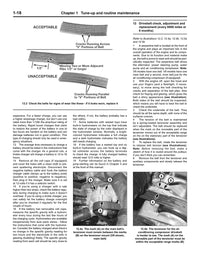
Car lights: how they work
Lights allow you to be seen, they allow you to see at night and they let you tell other road users what you intend to do next.
Car lights have become much more advanced in recent years, from complex headlight units that deactivate individual LEDs to avoid dazzling traffic ahead, to always-on daytime running lights. For the home mechanic, it's important to note that bulb technology has also moved on, with traditional halogen bulbs being replaced by HID (High-Intensity Discharge) and xenon bulbs.
So let's run through a bit about your car's lights and the bulbs you will need to replace during your regular maintenance.
Which car lights to use
In this section, our experts will answer some of the common questions asked about car lights, starting at the front of the car.
What are the side lights on a car?
The side lights (or sidelights) can be used when visibility is slightly reduced, but not to the point when dipped headlights are necessary. In recent years, these have been replaced on new cars by daytime running lights (DRLs), which are illuminated as soon as the vehicle’s ignition is switched on, and are only extinguished when the dipped headlights are activated and, sometimes, when you turn on an indicator.
What are low-beam headlights?
Low-beam headlights, which are also known as dipped headlights, should be used when visibility is compromised by increasing darkness, or by adverse weather such as rain, fog or snow.
What are high beams?
High-beam headlights are the brightest lights at the front of the car, and should be used when your visbility is affected and when there is no other road user ahead of you or approaching. However, high beam should not be used in thick fog or heavy snow, because the light is merely reflected back at the driver, lessening your ability to see ahead instead of increasing it.
What are foglights and when should they be used?
Some cars, but not all, have two front foglights, which are designed to emit a wide light beam that illuminates the edges of the road closer to the front of the car. This makes it easier to see the kerb in thick fog. In modern cars, they are sometimes used to mimic the effect of directional (or swivelling) headlights, so when the steering wheel is turned, the foglight for that side of the car will illuminate to light up the road in the direction that you are turning.
What are turn signals?
At the front of the vehicle there will be two orange turn signal lights (also known as blinkers), one at each side; these flash to let other road users know that you intend to make a turn. You will often find secondary indicators on the front wings or in the door mirrors.
How has car light technology changed?
Headlight technology is improving all the time, and has moved on a long way from the dim bulbs (or even candles!) of old. Many cars now have bulbs filled with xenon gas, which is both brighter and also less tiring for the driver’s eyes. However, in another advance, some manufacturers now offer LED headlights that are even brighter and longer-lasting, yet which use less energy. Finally, some car makers are now offering laser headlights, which promise yet another step in brightness and efficiency.
What lights are at the rear of a car?
At the back of a car are bright red tail lights, which are illuminated when the headlights or sidelights/DRLs are on. The brake lights are the same red as the tail lights, but are much brighter and are only illuminated when you press the brake pedal. Most cars also have a third brake light at the top or bottom of the rear window, which only illuminates when the brake pedal is pressed.
If you have a European car it's likely to have a rear foglight that helps you to be seen in fog and heavy rain, while a white reversing light signals to others that you intend to reverse, and helps you to see behind.
There will also be rear turn signals, which can either be orange blinkers or incorporated into the tail lights; these flash when you indicate.
As with front lights, traditional bulbs in the rear lights are being replaced with LED technology, which is brighter, more efficient and more reliable.

How to check car lights?
Check all external lights and the horn. Visually check all accessible wiring connectors, harnesses and retaining clips for security, and for signs of chafing or damage.
You'll need an assistant to help check your stop lights, but if you can't find someone, back up to a wall or garage door and operate the lights. The reflected light should show if they are working properly.
If a single indicator light, brake light or headlight has failed, it is likely that a bulb has blown and will need to be renewed. If both brake lights have failed, it is possible that the switch has failed.
If more than one turn signal light or headlight has failed, it is likely that either a fuse has blown or that there is a fault in the circuit. The main fuses are located in the engine compartment fuse/relay box on the left-hand side of the engine compartment. Unclip and remove the cover for access. In our manuals you can refer to the wiring diagrams at the end for details of fuse locations and circuits protected.
Additional fuses are sometimes located in the passenger compartment fuse/relay box. Again, your Haynes manual or the car's handbook will tell you where this is. To renew a blown fuse, remove it, where applicable, using the plastic tool provided or needle-nosed pliers. Fit a new fuse of the same rating, available from car accessory shops. It is important that you find the reason that the fuse blew.
Car headlight bulbs: the three main types
LED Bulbs

Halogen/Filament Bulb

HID Xenon Bulb and Ballast

LED Bulbs

Halogen/filament bulb
Until recently all headlights were filament bulbs, with electrical current heating up a thin metal filament.
Most bulbs are now filled with halogen gas which allows the bulb to run hotter and therefore brighter. In some cases bulbs are filled with xenon gas (not to be confused with HID xenon headlights) which gives a whiter, brighter light. In older vehicles, and some commercial trucks and vans, the bulb is sealed in a unit with the headlight lens, which is why they are called “sealed beams”.
Turn signals, parking lights, taillights, reverse lights, and others also commonly use filament bulbs, although these are steadily being replaced with LED units.
HID/xenon and bi-xenon
HID stands for high-intensity discharge, and they don't have a filament like regular bulbs, instead the light comes from an arc of electricity that jumps across two electrodes within a xenon-filled glass tube.
These lights require a small box of electronics that both starts the light and controls its output, called the ballast. The ballast boosts the voltage to several thousand to make the arc, then dials it back to hundreds of volts to maintain it. Often a car equipped with HID lights will still use a halogen bulb for the high beam, or passing light, or a combination of HID and filament lights.
HID lights are brighter and whiter and generally last longer (around 2000 hours), but are sometimes considered "not user serviceable" due to the voltages. The bulbs cost considerably more than regular bulbs, but replacement isn't any more complex.
LED
LED stands for Light Emitting Diode, and due to their low power usage and ultra-long life LEDs are increasingly used within headlights, taillights, and turn signals.
LED headlights are typically only used as the low/high beam on newer cars, and hybrids, but they are becoming more common. LEDs are increasingly being used for blinkers, brake lights, fog lights, and more, and may last the life of the car in these applications.
Aftermarket replacement LED bulbs which replace many old-style bulbs are also available for retrofitting, but due to their low power consumption they can cause issues. You may get warning lights on your dash indicating a blown bulb, or the turn signals may not blink properly. If this occurs, a "CANbus LED" with a tiny resistor built in to simulate the power usage of a normal bulb may solve it. LED turn signal bulbs that don't flash properly can also be fixed with resistors, or the installation of an electronic solid state flasher/blinker relay.

















